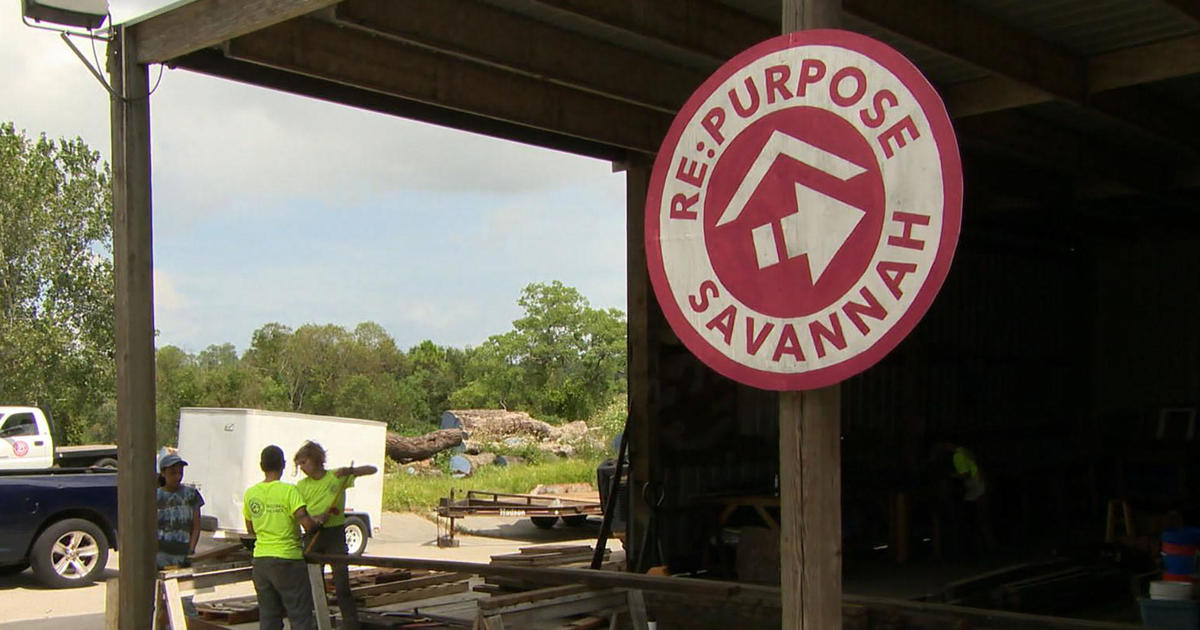Savannah, Georgia — If historic homes are the fabric of Savannah, Georgia, Mae Bowley is the thread, salvaging precious materials from those about to be torn down.
“I got bit by the old building bug, and the next thing I knew, I was a warrior for these old building materials, trying to do everything I could to keep them out of the landfill,” said Bowley, who is the executive director of the nonprofit Re:Purpose Savannah.
Bowley showed CBS News an example of irreplaceable wood, hundreds of years old. It’s the kind of wood Re:Purpose Savannah salvages when it convinces owners to deconstruct a building instead of demolish it.
According to the Environmental Protection Agency, the construction and demolition industry in the U.S. sends an estimated 145 million tons of waste to U.S. landfills, accounting for a quarter of all waste.
“Construction and demolition is the single biggest contributor to American landfills,” Bowley said. “So this is an urgent, urgent area to address our current practices.”
From hinges and doorknobs to clawfoot tubs, window frames and that incomparable wood, it’s all sold at their warehouse. In five years, they’ve kept 3,000 tons of material out of landfills.
What’s old often ends up in new construction.
“The built environment holds so much of our history,” said Katie Fitzhugh, director of deconstruction for Re:Purpose Savannah. “And so when you lose it, we lose a lot of the stories and the connections that go with that.”
The nonprofit is an all-women plus venture in a male dominated industry. More than 90% of construction workers are men.
“There are barriers, whether they’re formal or informal,” Bowley explains. “And removing those barriers helps women break into a really rewarding industry, and start really long, productive, healthy careers.”
And it serves as an alternative to bulldozers and wrecking balls.
“There is light and there is beauty in what we’re able to do,” said Kelly Lowe, director of salvage for Re:Purpose Savannah. “And I think, you know, the broader message of what we’re doing is that we’re doing something with intention.”
It’s the nuanced work of preserving history, piece by precious piece.


